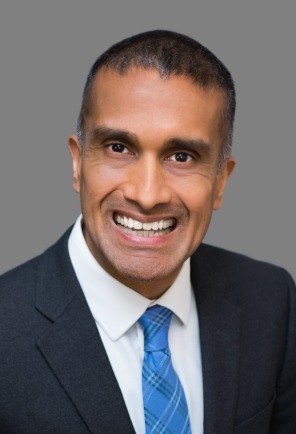There's Much More to "But-For"
In the world of claims for lost profits, the concept of but-for is key.
On face, it’s simple. The term means that when you set out to calculate economic damages, you begin by comparing what actually did happen to what would have happened -- but for an event, circumstance or condition. Once you define these two scenarios -- what might have occurred vs. what did -- you can calculate losses. In a perfect world, it’s a straightforward concept and calculation.
Let’s begin with a simple example. Say one party in a matter breaches a contract. The plaintiff alleges that things would have been different -- better, of course -- had the contract been performed. The dispute can be over sales growth, costs, revenue, expenses or anything financial, but it all amounts to the same thing: lost profits. This framework is very common and well-defined in breach of contract cases.
Often, in the world of professional malpractice, “straightforward” is the last word you’d use to describe things. In my varied experience on professional malpractice cases, there’s usually a plurality (if not a multitude) of but-for scenarios. This is due to any number of factors and conditions -- planned and unplanned, exceptional and ordinary, other causal factors, etc.
Case Study #1: Catastrophe Insurance Scenario Requires a Deeper Look
In the early 2000s, following two devastating hurricane seasons in consecutive years, a property and casualty insurance company became insolvent. Regulators shut the insurance company down after a second year of massive, unprecedented losses. The regulators claimed that if the auditor had done its job properly, the insurance company would have been shut down after the first year, eliminating all the devastating financial losses that occurred in that second year of major hurricanes. The receiver for the insurance company claimed the second year’s losses of $1 billion against the auditor.
To address this claim, it was noted that the insurance company couldn’t have simply canceled all its active policies after that first year of heavy losses, due to state regulations. Thus, the insurance company would have suffered the same level of losses.
After conceding this, the receiver came back with a new theory of damages: the “runoff” model. According to the runoff idea, the insurance company would have let each individual policy expire as it came due. By putting forth the runoff model, the insurance company now acknowledged that it would have suffered some level of losses in that second devastating hurricane year.
But there was a problem with this theory. In a runoff scenario, an insurance company would be receiving fewer premiums over time from which to pay out its claims. This wouldn’t have been tenable, as the insurance company had massive claim liabilities to pay out following the first bad hurricane year. In order to obtain the necessary funds in a runoff scenario, the insurance company needed to reduce its reinsurance prior to the second year. By doing so, the insurance company actually would have suffered worse losses in a runoff scenario than it would have in the scenario that actually happened.
In the end, the insurance company maximized its reinsurance coverage. They could only afford to do this because they were able to write new policies and collect premiums that could be used to pay claims incurred in the first year of hurricane losses.
Conclusion
Initially, regulators claimed that the insurance company could have simply canceled all its policies after the first of two devastating hurricane years. (i.e., the insolvency and losses may have been avoided, but for the decision to remain open after the first year of very bad losses.) By analyzing the regulatory climate and digging into the financials, it was demonstrated that this was not the case. Such an assertion required detailed research and careful consideration of the various possible alternate scenarios, as well as the factors that could have influenced them. Expert testimony was provided at jury trial and the matter was decided in favor of the auditor.
Case Study #2: But-For Scenario Would Have Been Devastating in Wake of Real Estate Market Crash
Here, the legitimacy of a but-for scenario through the lens of personal and macroeconomic investment factors is examined.
The client was counsel representing a buyer in a large hotel sale transaction. The property in question was an off-strip property in Las Vegas. In this dispute, the buyer claimed that his counsel had failed to properly secure his interest in the property.
At the time of the initial sale -- the early 2000s -- the Las Vegas real estate market was robust. However, the seller of the hotel property made a fraudulent claim that it still owned the property in the subsequent years. According to the buyer, this dispute tied up the property in question through the 2008 financial crisis.
The buyer claimed that if the property had not been tied up in legal proceedings during those pre-crisis years, he would have sold the property at the peak of the market in 2006 to a hotel and casino developer.
That was a bold -- and financially massive -- but-for claim. However, such a claim was inconsistent with the buyer’s well-established desire to build his own hotel and casino development. Upon purchasing the property, the buyer indicated his desire to develop the property into a hotel and casino. At his deposition, after the 2008 financial crisis had passed, the buyer continued to express his longstanding desire to develop a hotel and casino at the property. Furthermore, the buyer had a history of buying and holding real estate. The buyer did not sell any of his other real estate property holdings before or after the 2008 financial crisis occurred. The evidence did not support a theory that the buyer purchased the Las Vegas property with an intention to sell the property several years later.
Conclusion
Upon deeper inspection, the legal proceedings that held the buyer up from doing anything with his purchased property during those post-sale years actually prevented him from incurring major losses due to the crash in the real estate market which hit Las Vegas particularly hard. The but-for scenario would have resulted in significant losses in excess of what actually happened.
Case Study #3: Human Behavior Creates But-For Scenario That Dooms Company
As illustrated with the prior case studies, regulatory shutdowns can be fertile ground for diverse but-for scenarios.
In a matter involving a healthcare insurance company, a series of imprudent expansions, plus the passage of the Affordable Care Act (ACA), rendered this insurance company much less lucrative than it had been previously deemed (The ACA reduced Medicare Advantage premiums, required minimum spending thresholds and thus lowering overall profitability.).
In a bid to improve performance, the insurance company hired a seasoned senior executive. The move was a bad one -- rather than helping right the ship, the executive attempted to protect himself by alerting regulators over perceived misdeeds committed by the insurance company.
Following the executive’s allegations, the company was seized by regulators. It entered bankruptcy and a trustee took control. However, in the course of seeking assets to pay off the company’s debts, the trustee recovered assets that exceeded the company’s debts. As it turns out, the company was in fact financially solvent -- a rather unusual result.
The trustee sued the auditor, claiming that the auditor’s negligence allowed the company to continue operating and incur losses. The trustee claimed that had the auditor done its job, the insurance company would have voluntarily shut down earlier than it actually did, and thus avoided further losses. The trustee claimed those losses that would have been avoided against the auditor for malpractice.
Conclusion
In this case, the credibility of the insurance company’s new executive was in question. Whether due to negligence or malice, the executive took actions that reflected his own self-interest, rather than that of his company. In this but-for scenario, if the executive hadn’t taken those actions, the company may have remained viable and operational, as evidenced by the insurance company’s assets exceeding its liabilities in bankruptcy.
Final Thoughts
On the surface, the “correct” but-for scenario may appear to be obvious. However, in many cases, a plurality of but-for scenarios exist. Critical thinking coupled with detailed analysis of fact witness discovery, historical financial records, business plans, forecasts, economic trends, government regulations and other data will reveal the most reasonable but-for scenario(s).


